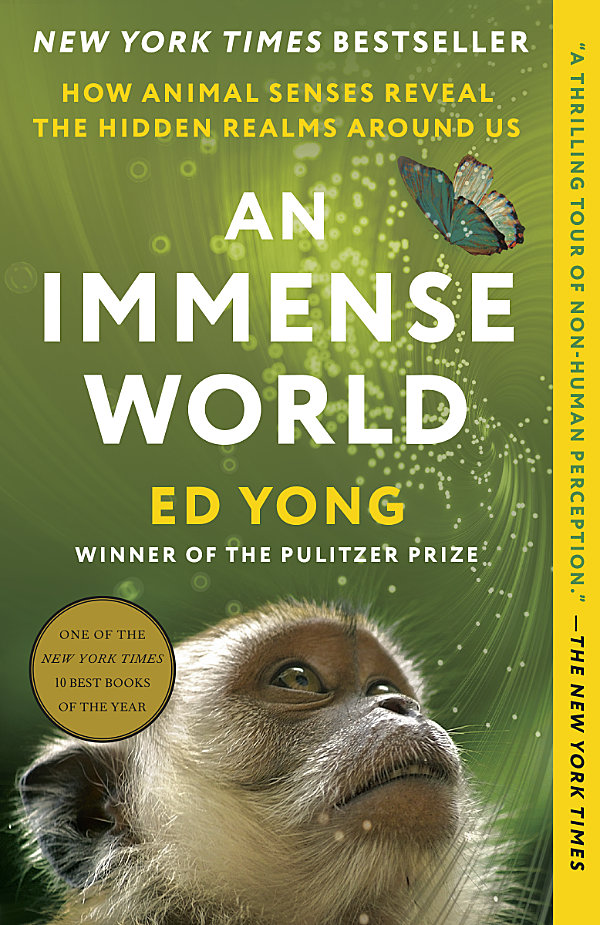An Immense World: newish book

I have been reading, intermittently, I afraid, An Immense World, subtitled “How Animal Senses Reveal the Hidden Realms Around Us,” by Ed Yong. The book is about senses: vision, touch, pain, hearing, taste, smell, but also heat, vibration, electric and magnetic fields, and echoes and echolocation. I am about up to the part where he tries to tell you, with a sort of apology to Thomas Nagel, what it is like to be a bat.
In the meantime, I heard Mr. Yong interviewed by Arielle Duhaime-Ross last week on Science Friday, under the title, Expanding our Umwelt: Understanding animal experiences. Umwelt is a German word that Mr. Yong borrows to mean “the part of [its] surroundings that an animal can sense and experience—its perceptual world.”
Additionally, The New York Times ran an article, A bird’s-eye view of a Technicolor world, by Emily Anthes. This article shows some videos supposedly demonstrating what the world might look like to a bird whose vision is sensitive to ultraviolet light. There seemed to be an implicit assumption that ultraviolet looked a lot like violet and the birds see the primary colors about the same as we do, but never mind.
I am supposed to know something about optics and even a little bit about vision. I once read Ivan Schwab’s monumental work Evolution’s Witness: How Eyes Evolved cover to cover and discussed it on Panda’s Thumb, here. Yet in the chapter on vision I learned
- that a certain kind of jumping spider has a Galilean telescope in each of 2 eyes and can see about as acutely as a dog. Its retinas are weird, but you will have to read the book to find out how. The field-of-view of each telescope is greatly limited, but that is OK because the spider has 4 other eyes to work with;
- that birds of prey have 2 foveas, one for tracking prey and one for looking at the horizon;
- that a certain microbe sports an eye that uses a reflecting mirror instead of a lens, all in a single cell (I showed a picture of a single-celled microbe that contained a focusing lens in the article on Prof. Schwab's book, so the concept of a microbe with an eye was interesting but not entirely shocking).
I read the book on a Kindle Paperwhite, which gives a black-and-white image. A photographic gallery was lumped at the back of the book and not particularly good in black-and-white, so I had to go to a computer to look at them. Except for, I think, 2 embedded figures, none was called out in the text, so you could not easily link the photographs back to the appropriate portion of the text. Additionally, I hereby lodge my perennial complaint about endnotes: Each chapter had countless endnotes, and most contained interesting and important information. Indeed, I learned about the foveas of birds of prey in an endnote in a chapter about bats and of the microbe with the reflecting mirror in another endnote. All of that material should have been worked into the text. If I had had a hard copy of the book – a codex – and had to shuffle back-and-forth 20-odd times in a given chapter, my Umwelt would have been greatly disturbed.
Reference. The Times article is based on Recording animal-view videos of the natural world using a novel camera system and software package, by Vera Vasas, et 14 other alia, Plos Biology, January 23, 2024. I have barely glanced at the article and will likely not read it.
